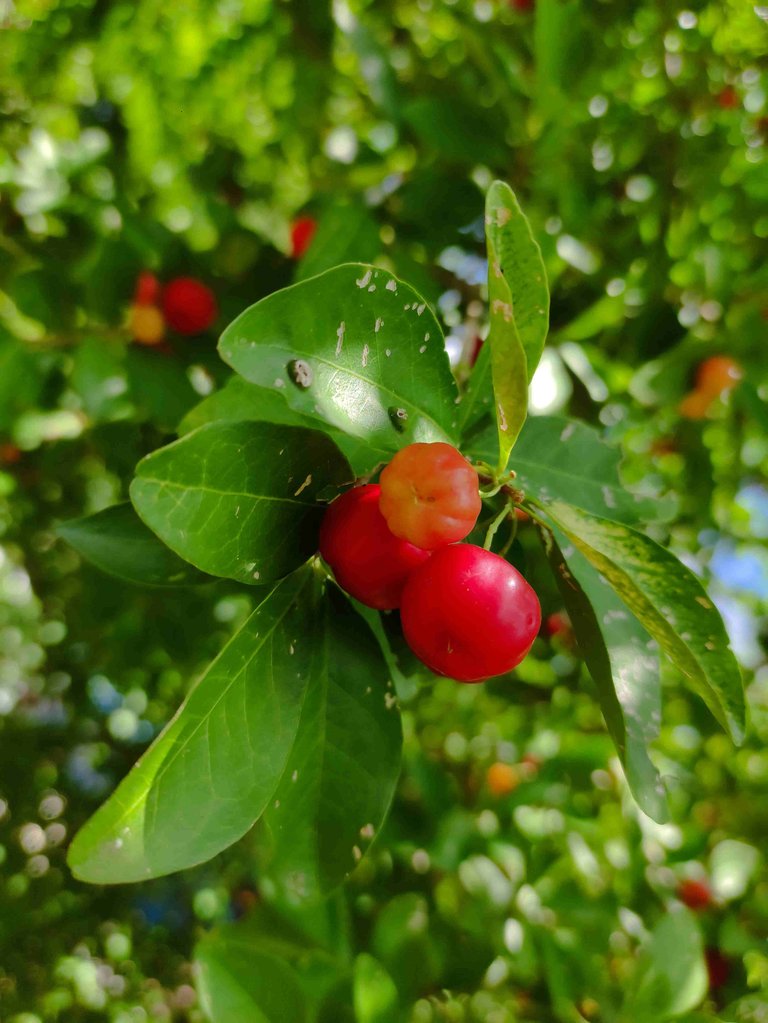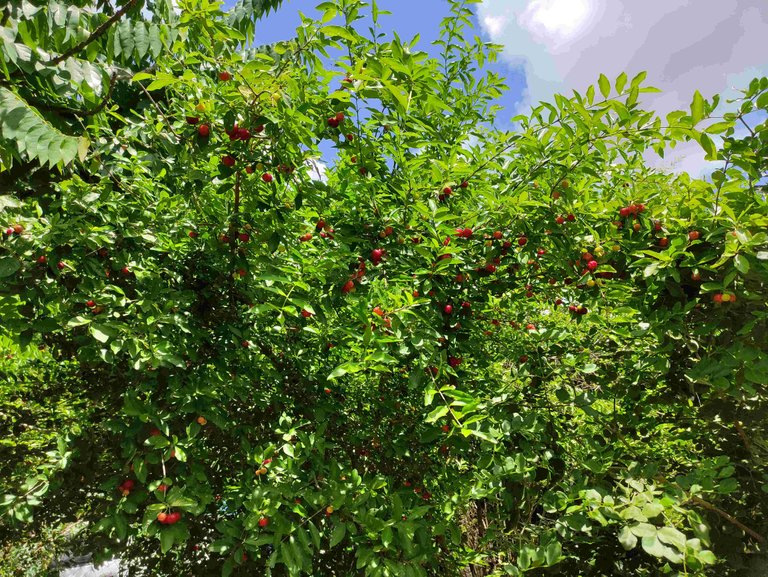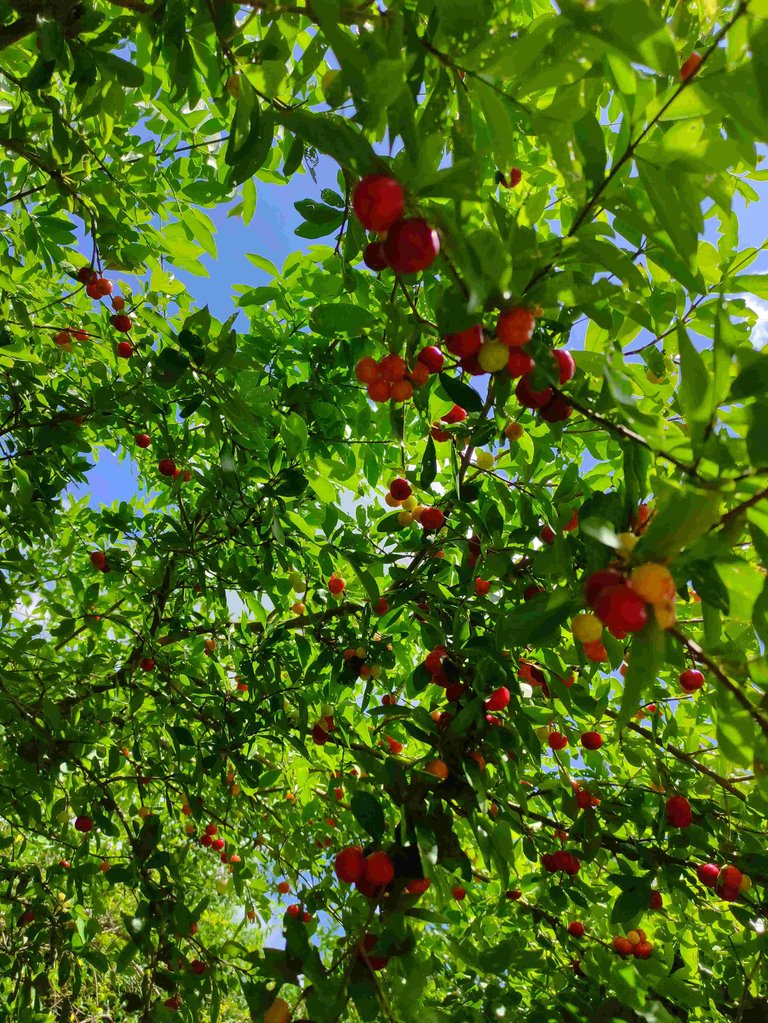
Greetings, happy Thursday, happy November 2024, may it be full of health, well-being, abundance and prosperity for everyone. There are plants that, perhaps because they are common, we do not appreciate in their full value, and I believe that one of them is the semeruco plant, cherry, mountain Cherry, acerola or as it is known scientifically: Malpighia emarginata. This is a little tree that was very common in my country, Venezuela, although I believe that there are fewer and fewer specimens of this plant species.
Saludos, feliz jueves, feliz Noviembre 2024, que sea lleno de salud, bienestar, abundancia y prosperidad para todos. Hay plantas que quizás por ser comunes, no apreciamos en su total valor, y creo que una de ellas es la planta de semeruco, cerecita, cerecita de monte, acerola o como se conoce científicamente: Malpighia emarginata. Este es un arbolito que era muy común en mi país, Venezuela, aunque cada vez creo que hay menos especímenes de esta especie vegetal.

Según la revisión bibliográfica que efectué, esta planta es originaria de Centroamérica e islas del Caribe, aunque tiene una gran capacidad de adaptabilidad, por lo que es posible encontrarla desde el sur de Norteamérica hasta Sudamérica. En Venezuela, durante el siglo pasado, era muy común pues en muchas casas había un arbolito; de hecho, en los años 70 salió una canción folklórica en honor a esta planta. Por aquí les comparto esta melodía, la cual fue escrita y compuesta por el gran Luis Mariano Rivero, y la canta Gualberto Ibarreto. Es una canción sencilla, pero muy linda.

Desde que tengo memoria, en mi casa siempre había un árbol de semeruco o de cerecita. A mí, desde niña, me ha encantado comer cerecitas, porque son deliciosas, y sé que son muy nutritivas (creo que tienen 40 veces más vitamina C que la naranja); así que cuando me mudé para acá y ví que el arbolito que había en el solar se había secado, me dediqué a plantar otro, lo cual hice con semillas. Este arbolito, el cual también se secó inexplicablemente, antes de morir dio más hijos, por lo que actualmente tengo cuatro ejemplares, dos de ellos en producción y los otros más pequeños. Esta planta se reproduce por esquejes y por semillas. Yo reproduje la mía por semilla, por lo que existen ligeras variaciones entre cada planta. Por ejemplo, la más grande da flores de un rosado más pálido, mientras que la mediana da flores más oscuras. Ambas producen mucha cantidad de fruta, y pueden cargar unas cinco veces al año, pudiendo recolectarse en cada período, de 20 a 30 kilos de cerecitas, dependiendo del tamaño del árbol.


El árbol de semeruco es resistente a la sequía, y crece un máximo de cinco metros. Para producir sus deliciosas cerecitas requiere riego y mucho sol. La fruta es pequeña, de máximo dos centímetros de diámetro, de un sabor entre dulce y agrio, y cuando está maduro es de un vibrante color rojo por fuera, y amarillo por dentro. Se pueden comer crudas, en jugo, dulce o mermelada. Yo las prefiero crudas y en jugo. Y otra de las razones por la cual siembro esta planta, es porque es melífera, específicamente para abejas, no para colibríes. La liban desde abejitas meliponas hasta Apis y abejas adrenas, por lo que es muy importante tenerlas en el solar para ofrecer más comida a estos valiosos insectos.


Aquí termino mi post de hoy, en el que les he compartido las imágenes de un arbolito muy valioso, que ofrece una fruta increíblemente nutritiva. Me despido de ustedes, deseándoles mucha salud y bienestar y recuerden: No todos los días son iguales y más importante aún: Todo lo que das, todo lo que haces, inexorablemente volverá a ti. ¡Abrazos!


Todo el contenido, (excepto los separadores de texto) es de mi propiedad y está sujeto a derechos de autor // All content (except text dividers) is my property and is subject to copyright.




Delegations welcome!

Posted Using InLeo Alpha